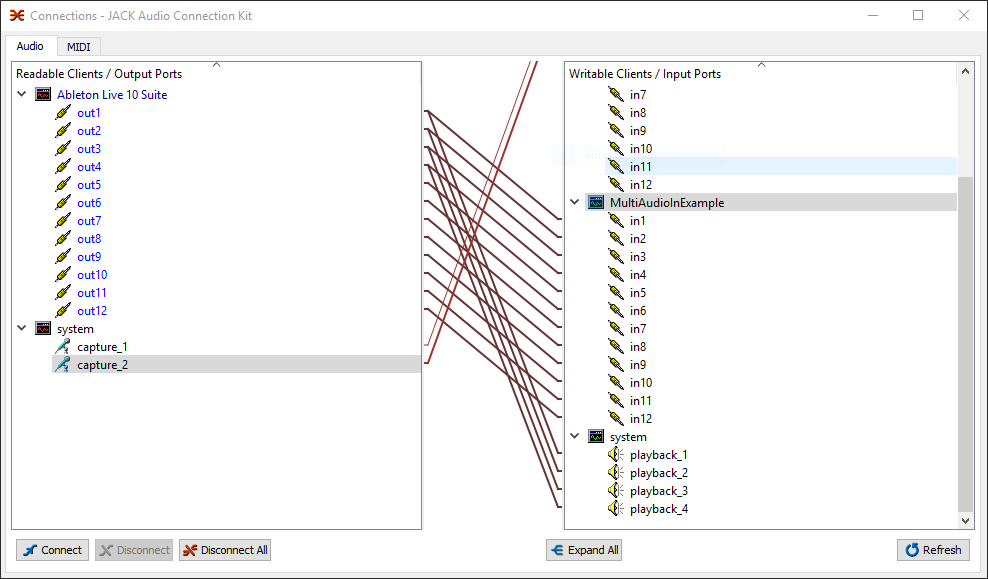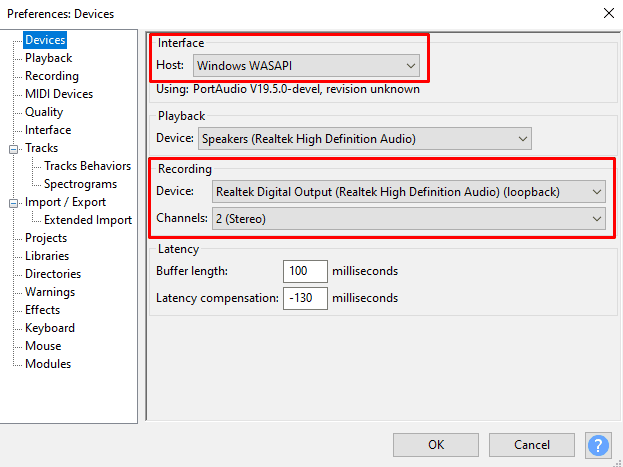

(Otherwise, if the loopback device is disabled, it will not appear in the list.)īrowse the list of recording devices to locate the loopback device (if it exists). To run Mmsys.cpl, open a Command Prompt window and enter the following command: control mmsys.cplĪlternatively, you can run Mmsys.cpl by right-clicking the speaker icon in the notification area, which is located on the right side of the taskbar, and selecting Recording Devices.Īfter the Mmsys.cpl window opens, right-click anywhere in the list of recording devices and verify that the Show Disabled Devices option is checked.
WINDOWS AUDIO LOOPBACK WINDOWS
If your audio adapter contains a hardware loopback device, you can use the Windows multimedia control panel, Mmsys.cpl, to designate the device as the default capture device. (You can also use a legacy audio API, such as the Windows multimedia waveInXxx functions, to capture the stream from the device.)
WINDOWS AUDIO LOOPBACK CODE
Thus, if an adapter supports a loopback device, an audio application can record from the device in the same way that it records from any other capture device.įor example, if you select a hardware loopback device to be the default capture device, you can use the RecordAudioStream function (without modification) in the code example in Capturing a Stream to capture the stream from the device. The lack of standardized names might cause users to have difficulty identifying a loopback device in a list of device names.Ī hardware loopback device is a capture device.
WINDOWS AUDIO LOOPBACK WINDOWS 10
In Windows 10 versions 1703 and higher, event-driven loopback clients are supported, and no longer need the workaround involving the render stream.Ī client can enable loopback mode only for a shared-mode stream (AUDCLNT_SHAREMODE_SHARED). Each time the client receives an event for the render stream, it must signal the capture client to run the capture thread that reads the next set of samples from the capture endpoint buffer. To work around this, initialize a render stream in event-driven mode. In versions of Windows prior to Windows 10 1703, pull-mode capture client does not receive any events when a stream is initialized with event-driven buffering and is loopback-enabled.

However, other types of audio applications might find loopback mode useful for capturing the system mix that is being played by the audio engine. WASAPI provides loopback mode primarily to support acoustic echo cancellation (AEC). Initialize a capture stream in loopback mode on the rendering endpoint device.Īfter following these steps, the client can call the IAudioClient::GetService method to obtain an IAudioCaptureClient interface on the rendering endpoint device.Obtain an IMMDevice interface for the rendering endpoint device.To open a stream in loopback mode, the client must: In loopback mode, a client of WASAPI can capture the audio stream that is being played by a rendering endpoint device.


 0 kommentar(er)
0 kommentar(er)
